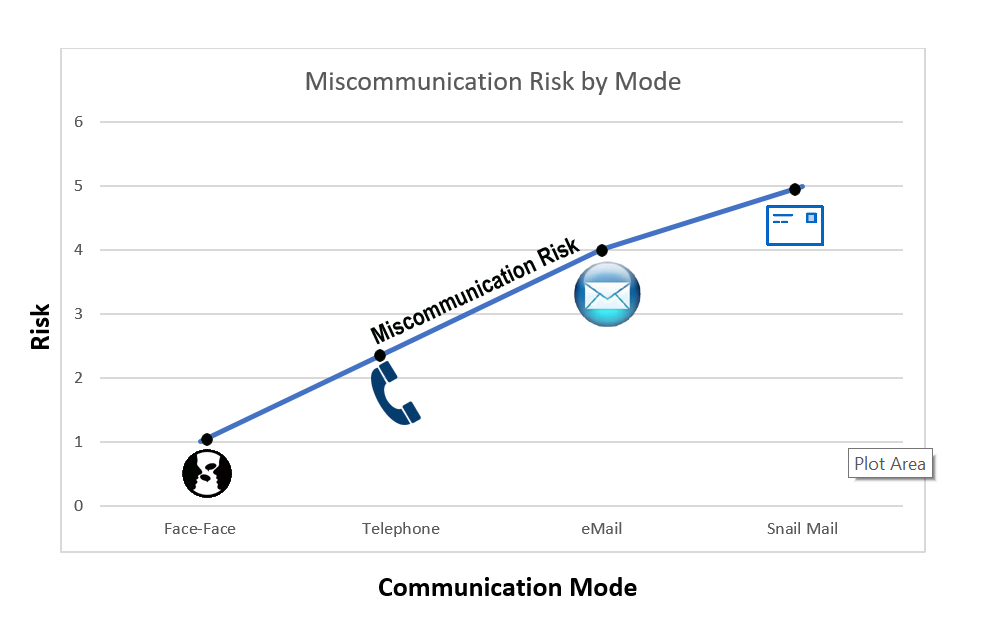An article published by the Society for Human Resource Management (SHRM) referenced a survey of 400 companies with 100,000 employees each that cited an average loss per company of $62.4 million per year because of inadequate communication to and between employees.
Even smaller businesses of 100 employees suffer the impact of miscommunication, the article suggested, as it went on to quote Debra Hamilton’s article “Top Ten Email Blunders that Cost Companies Money,” in which she stated miscommunication cost these smaller businesses an average of $420,000 per year.
Clearly miscommunication is expensive!
There are many factors that contribute to poor communication, ranging from poor planning, to inaccurate predispositions, to language differences.
However, miscommunication often occurs even when people have taken the time to plan and when the are speaking the same language, simply due to the mode in which they are communicating.
Consider that we all interpret what others “say” based on three things:
- Word choice
- Voice tone
- Body language
Now consider that with each step we are removed from our audience we lose one of these key factors, thus increasing the “risk” of miscommunication as depicted in the graph below.

For example, when we move from a face-to-face mode of communication to a telephone conversation, we lose the visual aspect of the interaction. Consequently, we can’t observe body language – the facial expressions, hand gestures, or other postures that enable us to more accurately interpret the true meaning of what is being said; and, therefore, the risk of communication is greater.
Similarly, when we move even further apart, as in when interacting via the written word (i.e., email or mail), we lose both the visual and voice tone components of the communication. This further complicates the situation because, as we’ve all heard time-and-time again, “it’s not always what we say, but rather ‘how’ we say it” that conveys the true meaning of our words. Even worse, since we are not directly in front of or speaking with our audience, we can’t observe or detect how (or if!) they have reacted to the information we shared… Did they understand our message properly? Were they happy about it… or upset? Did they even receive the message?
A Few Simple Solutions:
The first step toward improving the quality of our communication involves maintaining an awareness of these potential pitfalls, and taking purposeful steps to reduce the risk of miscommunication that is associated with each of these communication modes.
When using the phone, a good rule-of-thumb is to ask more questions – in particular, clarifying questions – to make sure both or all parties are on the same page. Since we won’t be able to interpret body language, we might also do our best to optimize voice tone; we can do this by making sure we speak directly into the mouthpiece and that we don’t hold it too close to our lips. In addition, if we sit-up straight and lean forward when speaking on the phone, our diaphragm will open and our voice will project more strongly.
When corresponding in writing, it’s important to re-read before sending to ensure clarity. We should also pay close attention to punctuation and spelling. Consider the difference in meaning between the following two sentences, which is brought-about by simply omitting a comma:
“Let’s eat, mom!” (children asking their mom for a meal)
“Let’s eat mom!” (you can figure this one out…)
Keeping these written messages concise also tends to improve their quality, as it typically requires more thought and re-reading/editing in order to keep things on the shorter side.
These little “tweaks” can make a big difference in the long-run; and given the costs of miscommunication outlined above, are well worth the effort.